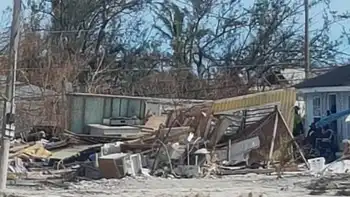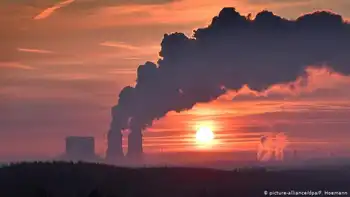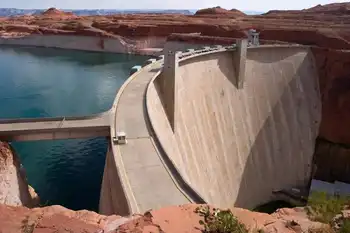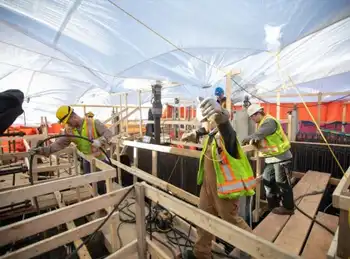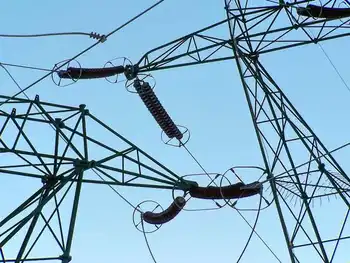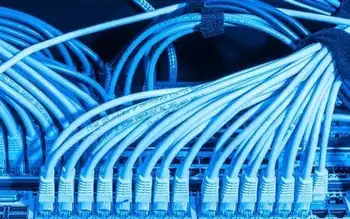Utilities trim trees or risk big fines
By USA Today
NFPA 70e Training - Arc Flash
Our customized live online or in‑person group training can be delivered to your staff at your location.

- Live Online
- 6 hours Instructor-led
- Group Training Available
"We have confidence it will have an impact," says Jim Owen, spokesman for the Edison Electric Institute, a trade group that represents private utilities.
"Now for the first time ever, you can be formally sanctioned and penalized and have to pay serious money" for letting trees grow into lines, Owen says.
Trees falling onto wires in storms or wires sagging in the heat into tree limbs are to blame for most of the major U.S. blackouts going back to 1996, according to the North American Electric Reliability Corp. (NERC). The institute estimates that 90% of weather-related outages are caused by trees hitting power lines.
Mandatory tree trimming did not gain momentum until Aug. 14, 2003, when transmission lines owned by FirstEnergy in Ohio came into contact with tree limbs and triggered the shutdown of 21 power plants in three minutes in the eastern USA and Canada.
The massive outage cut electricity to 50 million people, some of whom were without power for days.
In 2005, Congress passed a bill requiring tree trimming, but it was not enforced until 2007 to give utilities time to comply.
It was not until this summer that NERC, which administers the law, began fining utilities that have not moved aggressively enough to comply.
The first two fines, totaling $255,000, were issued in June. NERC says the fines can go as high as $1 million per day.
"Our focus is maintaining a clearance around those conductors so the transmission lines can be operated safely to their design capabilities," says David Hilt, vice president and director of compliance at NERC. "We're not concerned about health of the trees or aesthetics."
Utilities say they have always had crews working all year to cut thousands of trees along hundreds of thousands of miles of power lines. But with the threat of fines of up to $1 million a day, they say they are moving more aggressively.
"In the past, we trimmed some trees, but now we remove them," says Mark Durbin, a spokesman for FirstEnergy, whose lines figured in the 2003 outage.
"Our responsibility is to ensure the reliability of our system," Durbin says.
The federal rules affect only high-voltage transmission lines and not the neighborhood wires known as distribution lines. It is transmission lines that carry the risk of major outages.
Jay Apt, executive director of the Carnegie Mellon Electricity Industry Center in Pittsburgh, cautions that trees were not the sole culprit in the 2003 blackout. Human error and computer failures also played a role.
However, "any accident is caused by a chain of errors, and if you eliminate any one link in the chain, you generally eliminate the incident," he says.
Others agree. "Tree trimming will make a big difference because right-of-way incursions is one of the biggest reasons why we have outages in general," says Vijay Vittal, director of the Power Systems Engineering Research Center at Arizona State University.
In Ohio and Kentucky, Duke Energy ensures compliance with the law by cutting trees that could potentially grow to within 20 feet of its 600 miles of transmission lines and 9,600 miles of distribution lines, spokeswoman Kathy Meinke says.
That kind of effort to abide by the law is "unreasonable clear-cutting of trees when they're not a threat to the safety of the high-tension electric wires," says Kevin Celarek, town administrator of Green Township near Cincinnati.
After residents and elected officials complained, Duke temporarily halted its cutting of trees on private property in June.
It didn't happen in time for Jacki Maltbie, who lost a dozen 40-year-old maples in her front yard in Ohio's Miami Township outside Cincinnati that month.
"I cried for days. We had a beautiful property here," Maltbie says. "Now we've got 12 stumps that we have to pay to have removed."





